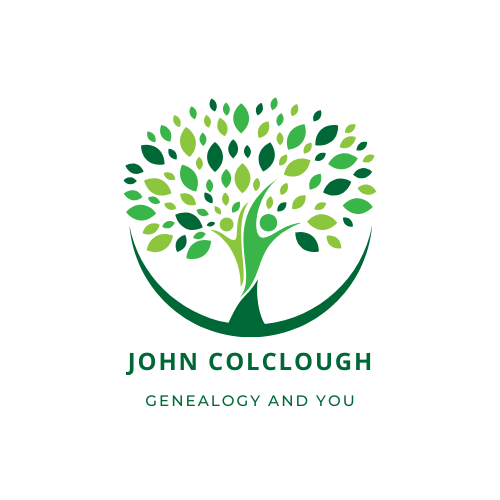John Colclough
19 January 2021
(Revisited and Revised December 2024)
A Fascination with Cheddar Man
Cheddar Man, the Mesolithic skeleton discovered in 1903 at Gough’s Cave in Cheddar Gorge, Somerset, continues to intrigue me. His ancient DNA, analyzed by scientists at the Natural History Museum, depicts one of the oldest modern humans found in Britain. He lived approximately 10,000 years ago as a Mesolithic hunter-gatherer, with dark skin, blue eyes, and a height of about 166 cm. DNA testing even revealed that a modern local resident shares a maternal lineage with Cheddar Man.
Sadly, my DNA results cannot be directly compared to Cheddar Man—his genome is not yet accessible in public databases. Undeterred, I have explored other ancient connections using online tools like GEDmatch. These comparisons have opened a fascinating window into distant genetic relationships and ancient lives. Here are some of the connections I’ve uncovered:
Ancient Connections Through DNA
- Ludas-Varjú-dűlő, Hungary (c. 3,200 years ago) I share about 0.43% DNA with an individual known as BR2. This person likely had light brown skin, brown eyes, and lactose tolerance—a genetic adaptation linked to raw milk consumption. BR2’s community lived during the Bronze Age in the Great Hungarian Plain, an important cultural crossroads of trade and fortified settlements. My shared DNA segments are scattered across Chromosomes 1, 10, 11, 14, 17, and 21.
- Loschbour Man, Luxembourg (c. 8,000 years ago) Loschbour Man was a Mesolithic hunter-gatherer who likely had dark skin, a >50% probability of blue eyes, and was lactose intolerant. Sharing 0.28% of DNA with him, my connection aligns with the Western Hunter-Gatherer genetic group. Segments are found on Chromosomes 2, 8, 10, and 17.
- Ust-Ishim, Siberia (c. 45,000 years ago) The Ust-Ishim Man represents one of the earliest modern humans in western Siberia. Sharing 0.22% DNA with him, I am linked to a genome that also contained 2% Neanderthal DNA. This ancient ancestor lived during the period of initial human-Neanderthal interbreeding, with my shared segments on Chromosomes 2, 6, 20, and 22.
- Stuttgart, Germany (c. 7,500 years ago) A female early European farmer associated with the Linearbandkeramik (LBK) culture—known for its banded pottery—shares 0.17% DNA with me. Her traits likely included lactose intolerance, dark hair, and brown eyes. My shared DNA appears on Chromosomes 6, 14, and 15.
- Polgár-Ferenci-hát, Hungary (c. 7,200 years ago) This Neolithic female, identified as NE1, shares 0.15% DNA with me. She was likely lactose intolerant, dark-skinned, and brown-eyed, with genetic traits similar to modern Sardinians. Shared segments include Chromosomes 1, 18, and 22.
- Sabinka, Russia (c. 3,200 years ago) From the Bronze Age Karasuk culture in the Minusinsk Basin, this male, known as RISE493, shares 0.14% DNA with me. He likely had blue eyes, fair skin, and light-colored hair. My shared segments are on Chromosomes 1, 2, and 14.
- Clovis Baby, Montana, USA (c. 12,500 years ago) I share 0.09% DNA with an infant from the Clovis culture, characterized by distinctive projectile points. This connection likely reflects early genetic divergence between populations in Ireland and North America. Shared DNA appears on Chromosomes 7 and 9.
- Battle Axe Culture, Sweden (c. 3,700 years ago) I share a small amount (0.05%) of DNA with a male buried in Lilla Bedinge. Known for their distinctive axe heads, this culture represents part of my ancestral story.
A Broader Genetic Profile
One DNA utility estimates that my genetic makeup is roughly:
- 50% from 45,000-year-old hunter-gatherers who followed large herds as the climate warmed.
- 38% from early farmers who migrated into Europe 7,000–8,000 years ago.
- 12% from Metal Age invaders who brought domesticated horses, wheeled vehicles, and metal tools from the eastern steppes around 3,000 years ago.
These insights connect my ancestral past to distinct migrations and cultural shifts in Europe’s deep history.
Reflection and Exploration
Exploring these ancient connections has allowed me to reflect on the paths that led to my modern identity. As a child in Donegal, I fished for trout in local burns, echoing my hunter-gatherer heritage. Farming runs deep in my lineage, with all my great-grandparents tied to the land. And while I may lack the warrior edge of a Metal Age invader, my imagination often wanders to their transformative influence on Europe.
For anyone curious about their own genetic past, DNA testing and public tools like GEDmatch offer a way to uncover these distant stories. The results may be small in measurable terms, but the connections they illuminate are vast and compelling. Let your imagination run free—as I have…
